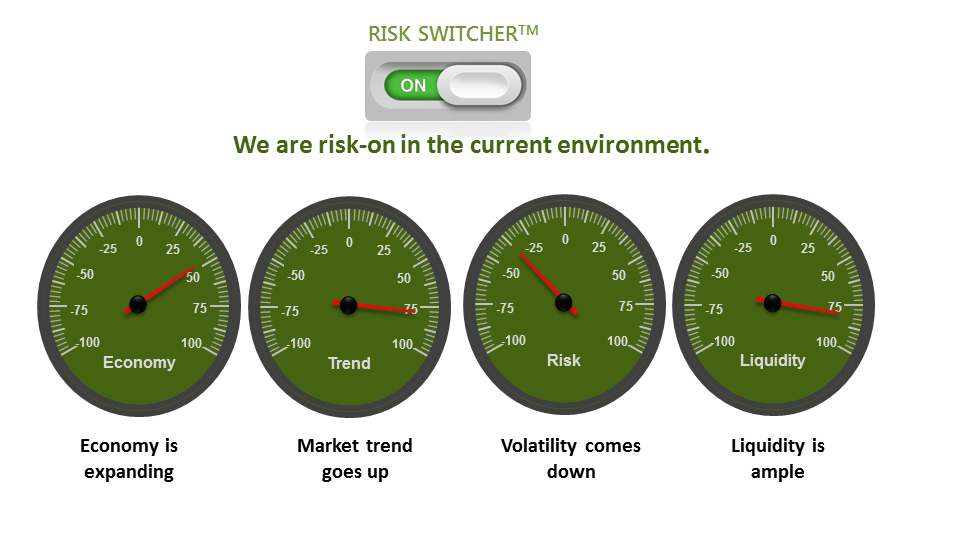Despite the hiccup last week, the US stock markets are still flirting with record highs. Yesterday, Goldman Sachs has revised its year-end target for the S&P 500 to 2,050, up from the previous target of 1,900. Against the backdrops of the Fed’s highly accommodative monetary policy, strong corporate earnings, and improving job markets, Individual investors are plowing money back into the U.S. stock markets. About $100 billion has been added to equity mutual funds and exchange-traded funds in the past year, 10 times more than the previous 12 months, according to data compiled by Bloomberg and the Investment Company Institute. At Julex, our quantitative model still indicates “risk on” and a continued bull market. Although no significant risks are imminent in the market now, investors should be mindful of four things that could derail market rallies.
- Rising Interest Rates. After the Fed will end QE in October, the timing and path of rate increases will present uncertainties in the markets. If the Fed raises interest rates slowly in an orderly fashion like the last tightening cycle, the market rallies may continue for a long while. If the Fed has to raise rates in a hurry to fight potential inflation threat, it will be hard for the market to digest and significant market corrections may occur. We believe that the slow rise in interest rates is more likely scenario, but it will be data dependent. The unemployment rate and inflation rate are the most important data for the Fed to determine the course of action.
- Subpar Revenue Growth. With forward P/E of S&P 500 Index at 15.6, which is higher than the ten-year historical average of 13.8, the room for further expansion may be limited. To support the continued bull markets, corporations need to continue growing revenues. In recent years, corporations have achieved their earnings growth by cutting costs. However, with profit margin at 9.8%, a historically high, it becomes hard to expand margin further. Revenue growth has a lot to do with economic performance. The US economy is doing better, but it only grows around 2% annual pace. Robust revenue growth cannot be supported by subpar economic performance. We do think the US economic growth will pick up, but it is still questionable how robust it will be.
- Fragile European Recovery and Banking System. Europe still remains a risk to markets. Last Thursday, the worries about a major lender in Portugal sent U.S. stocks on an early swoon after Banco Espírito Santo International delayed coupon payments relating to some short-term debt securities. Although the Europe just crawled out of recession, the recovery is still fragile and its banking system is still fragmented, especially in Portugal and Greece.
- Rising tensions throughout the Middle East and potentially higher oil prices. There are plenty of worries in Middle East. Egypt has regressed to military rule, Syria is still mired in a civil war, and the extreme group, ISIS, seizes city after city and part of the Syria. There are more potential disruptions of oil supply here. As oil prices are already creeping higher, any further disruption in production would likely send them higher. Increasing oil and gasoline prices would represent a painful blow for consumers and the global economy. In general, a $10 increase in the price of oil cuts 0.2 percent to 0.3 percent from GDP.
Qualitatively and Quantitatively, we still believe we are in a continued bull market and “risk on” regime and have our managed portfolios positioned accordingly. The four economic and market factors we are tracking are all point to a positive risk-taking environment (see graph below). However, investors need to be aware of the potential risks in the markets.

